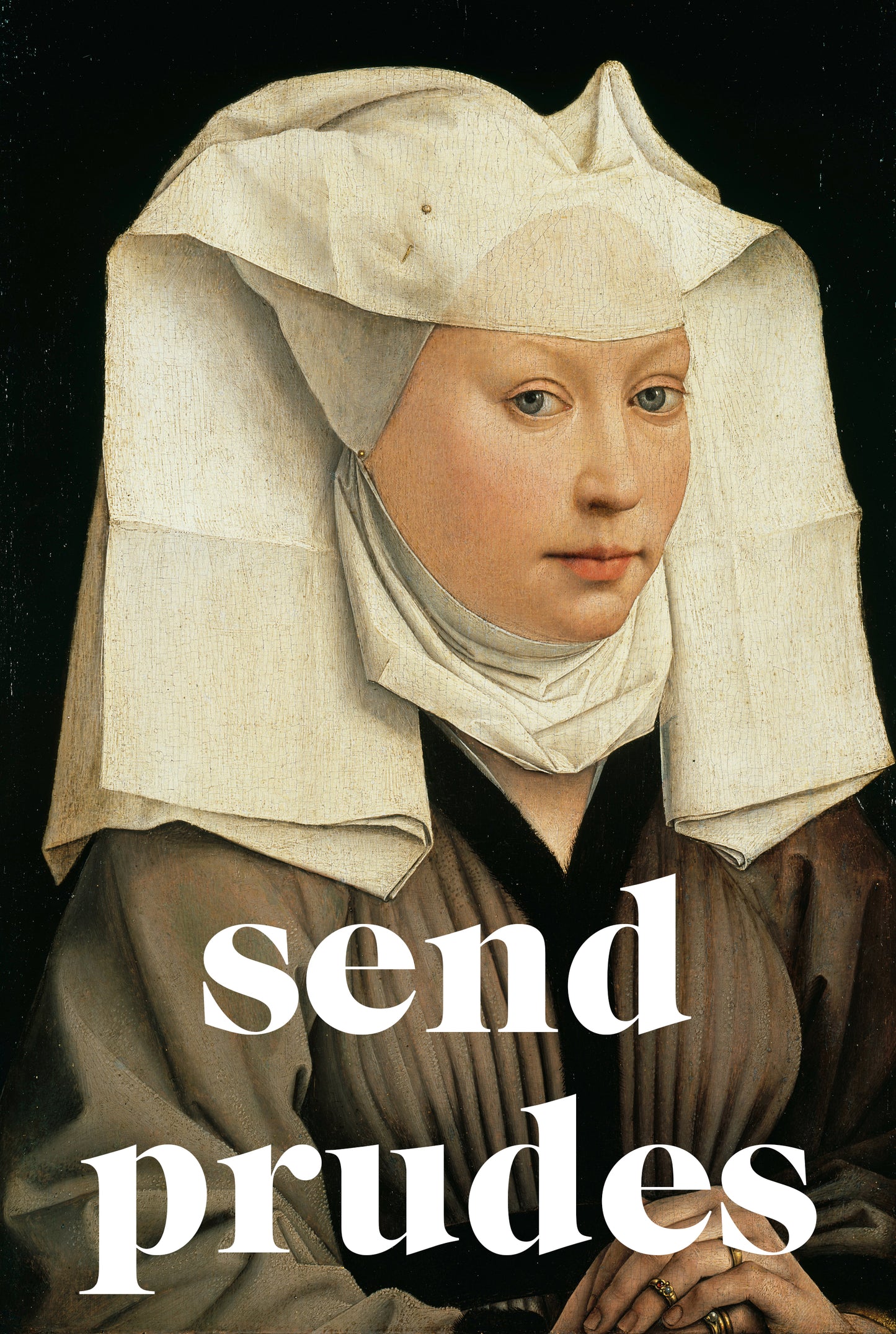Send Prudes
Regular price
$45.00
Regular price
Sale price
$45.00
Unit price
per
Shipping calculated at checkout.
Couldn't load pickup availability
Free Shipping! All sales final.
"Portrait of a Woman with a Winged Bonnet" by Rogier van der Weyden (1440)
Featuring a Belgian oak wood painting from the Gemäldegalerie at the Staatliche Museen zu Berlin. Size + care guide.
A little bit more about this painting from the Berlin State Museums:
"The motif of looking at and communicating with the viewer was something new for portrait painting at that time. Jan van Eyck and Rogier van der Weyden were the first artists in the Netherlands to pave the way for this new approach to portraiture. In contrast to most of the portraits of that time, in which the portrayed appear withdrawn, look into space or, as far as it is a diptych, turning reverently to the Madonna, the gaze of the young woman seeks contact with the viewer. It seems to express sympathy and deep understanding. The depicted is turned slightly to the right and shown in half the figure.
The youthful, lively face is framed by the two-part Flemish wing hood made of white linen, artfully attached with needles. The finely woven cloth lets the high forehead of the young woman shine through. The ideal of beauty of the time corresponded not only to the high forehead, but also to the headgear of the "hennin", which is preferably worn by ladies of the court society. In contrast, the hood of the young woman, through which she shows her belonging to the upper middle class, appears simpler and less exalted. The contrast between the white cloth with its stiff folds and the delicate skin color of the face emphasizes its beautifully curved contours."
Featuring a Belgian oak wood painting from the Gemäldegalerie at the Staatliche Museen zu Berlin. Size + care guide.
A little bit more about this painting from the Berlin State Museums:
"The motif of looking at and communicating with the viewer was something new for portrait painting at that time. Jan van Eyck and Rogier van der Weyden were the first artists in the Netherlands to pave the way for this new approach to portraiture. In contrast to most of the portraits of that time, in which the portrayed appear withdrawn, look into space or, as far as it is a diptych, turning reverently to the Madonna, the gaze of the young woman seeks contact with the viewer. It seems to express sympathy and deep understanding. The depicted is turned slightly to the right and shown in half the figure.
The youthful, lively face is framed by the two-part Flemish wing hood made of white linen, artfully attached with needles. The finely woven cloth lets the high forehead of the young woman shine through. The ideal of beauty of the time corresponded not only to the high forehead, but also to the headgear of the "hennin", which is preferably worn by ladies of the court society. In contrast, the hood of the young woman, through which she shows her belonging to the upper middle class, appears simpler and less exalted. The contrast between the white cloth with its stiff folds and the delicate skin color of the face emphasizes its beautifully curved contours."






